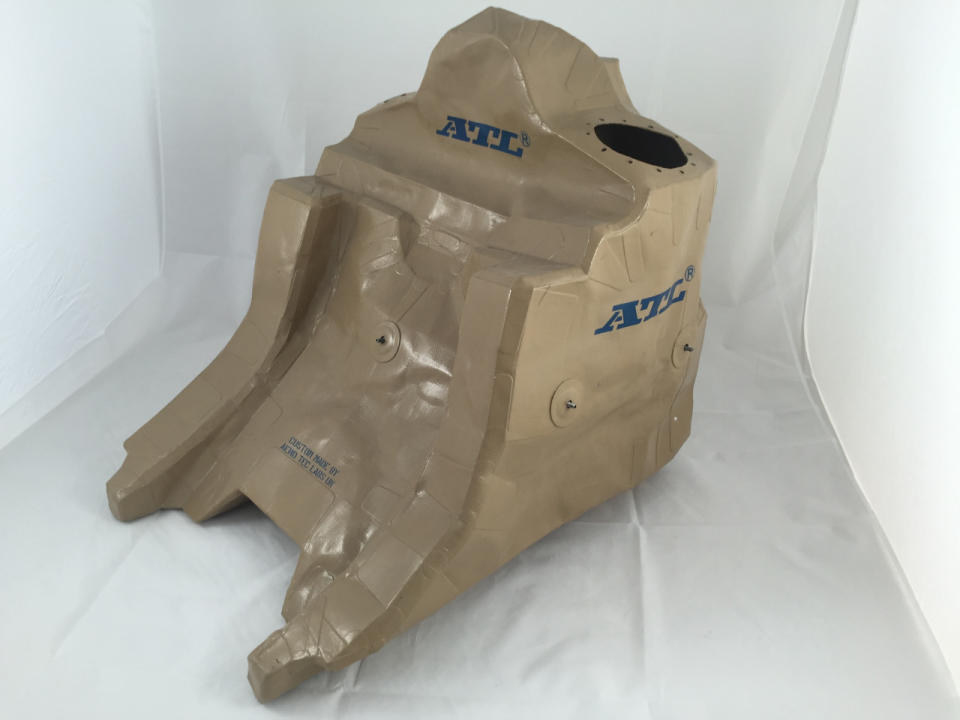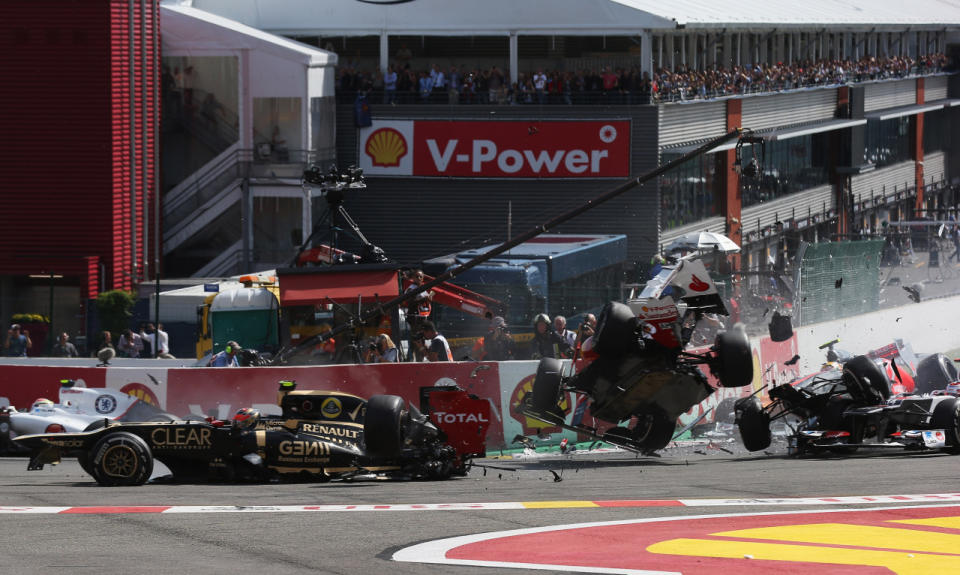F1 cars have petrol tanks, right? Wrong.

When’s the last time you saw the fuel tank in an F1 car? No, me neither.
We gaze at the bodywork, marvel at the mechanics of the engine, analyse the aerodynamics and pore over the beauty of suspension units but none of this is of any use unless there’s a safe, efficient supply of fuel to feed the whole thing.
In the early days of F1, the fuel tank was just that – a metal tank fitted wherever there was room, in which fuel sloshed around.
In fact, it didn’t just slosh around; in an accident, it sloshed out and over the car, the driver and anyone with the misfortune to be close by.
Despite this, it was 1973 before motorsport authorities made it compulsory to fit fuel tanks into the crash and fire-resistant structures that were designed to keep drivers safe – and it was 1988 before fuel cell crash testing was mandated.
Of all the safety systems on an F1 car, the fuel cell – you can’t really describe this as a petrol tank – may be the most important, and the rarity of fires in the modern sport is a tribute to how much work has gone into this most anonymous bit of a race car.
In fact, there has not been a major fire due to a fuel tank rupture in F1 since Gerhard Berger was left with second-degree burns after his 1989 crash at Imola.
So what’s so special about an F1 fuel cell?
It’s flexible

F1 fuel cells are made by Aero Tech Laboratories (ATL), who have bases in New Jersey and Bletchley, near Milton Keynes.
Each cell (pictured) sits between the driver and the engine, and it must be able to hold 100kg of fuel.
(As an aside, fuel is measured in kg rather than litres because the volume of fuel changes with temperature – if you chill fuel, it takes up less space. But it still has the same mass so, while you could squeeze more cold fuel into a 100-litre tank, you couldn’t perform the same trick when the limit is 100kg – 100kg of fuel contains the same amount of energy no matter what the temperature is. The 100kg limit in F1 equates to about 137litres, depending on the exact composition of the fuel and its temperature. And, before you ask, yes, water is heavier than petrol).
Unlike the fuel tank in your car, an F1 tank is flexible, and can safely deform in a crash. The FIA stipulates that it must be a ‘single rubber bladder’ but there’s a list of approved materials that can be used.
This flexibility has a double benefit – as well as improving safety, it also makes it easier to squeeze the fuel bladder into and out of the monocoque (the strong carbon-fibre tub that everything else is attached to), should it have to be inspected or replaced.
Why not just put a bigger hole in the monocoque? Because that would weaken the structure, allowing it to flex more and reducing its effectiveness in a crash.
ATL has made all the fuel cells in F1 for more than 25 years, with each team’s fuel cell going from initial concept to reality in eight weeks. Then it takes about three weeks to handmake each unit.
Around half-a-dozen identical cells will be used by each team every season. However, the cell designs between each team differ and so ATL are extremely careful to keep cell details secret – they have to be trusted by everyone on the grid.
It’s stab-resistant

In an accident, the biggest threat to the fuel cell often comes from sharp objects, and so military-grade materials are used to prevent metal and carbon-fibre shards from making a hole.
ATL’s ‘rubber bladder’ is actually made from duPont Kevlar fibres that are tightly woven to create an incredibly strong material, and then impregnated and coated with a secret ‘elastomer’.
This means the cell is both robust and flexible – and it’s also very lightweight, which is crucial in an F1 car.
The fuel cell cannot extend more than 400mm from the centre of the car’s front-rear axis – so it’s a maximum of 800mm wide. That means it has to be quite tall so, to keep the centre of gravity low, the monocoque will be designed to create maximum fuel space as close to the ground as possible.
In terms of strength, the FIA tests fuel cells to ensure they meet minimum requirements.
The bladders must have a minimum tensile strength of 8.9kN – they have to be able to support almost a tonne of weight.
They also must survive tearing and puncture tests, using specific tools, and their seam strength is expected to be as impressive as the tensile strength.
It’s got walls and trapdoors

As the 100kg of fuel in an F1 car gets used up, the petrol that remains starts to slosh about a lot.
These cars can generate 5g – five times the force of gravity – in a long corner such as Suzuka’s 130R, or under heavy braking.
That means that even half a tank of fuel, 50kg, will push with up to 250kg of force. That’s more than enough to upset the delicate balance of an F1 car.
So the fuel cell is divided both horizontally and vertically with baffles, made from a similar material to the outer bladder, to minimise the amount of sloshing that goes on.
As well as making the car more stable, this helps ensure the fuel gets to where it needs to be – the fuel pumping system.
The horizontal dividers have ‘trapdoors’ that the petrol drops through thanks to nothing more complicated than gravity.
The vertical dividers have carbon-fibre ‘one-way’ doors, which allow fuel to pass through to the back of the tank and the pump system – several small ‘lifter pumps’ which scavenge every bit of fuel and supply a collector tank which, in turn, supplies the main fuel pump.
These ‘walls and floors’ in the fuel cell are removable. They have to be, or engineers would not be able to squeeze the cell in and out of the monocoque.
They are held in place with zips or Velcro; that’s right, parts of the fuel cell are held together with the sort of stuff you’ll find on your raincoat.
It’s designed with big crashes in mind

There’s little point in building a super-strong fuel cell if you then hook it up to leaky plumbing.
So aerospace-grade fuel lines are used, with dry-break coupling. This means that, even if the engine is thrown from the car, the entire fuel supply system will seal itself shut.
Each fuel cell is custom-made, and everything about it – from double-reinforced apertures to the carbon composite fittings fused on to the inner panels – is designed with strength and safety in mind.
It just goes to show that innovation is everywhere in F1 – no part is too mundane to escape attention, and there’s nothing that can’t be improved by some careful engineering and a stroke of innovative genius.

 Yahoo Sport
Yahoo Sport 





































